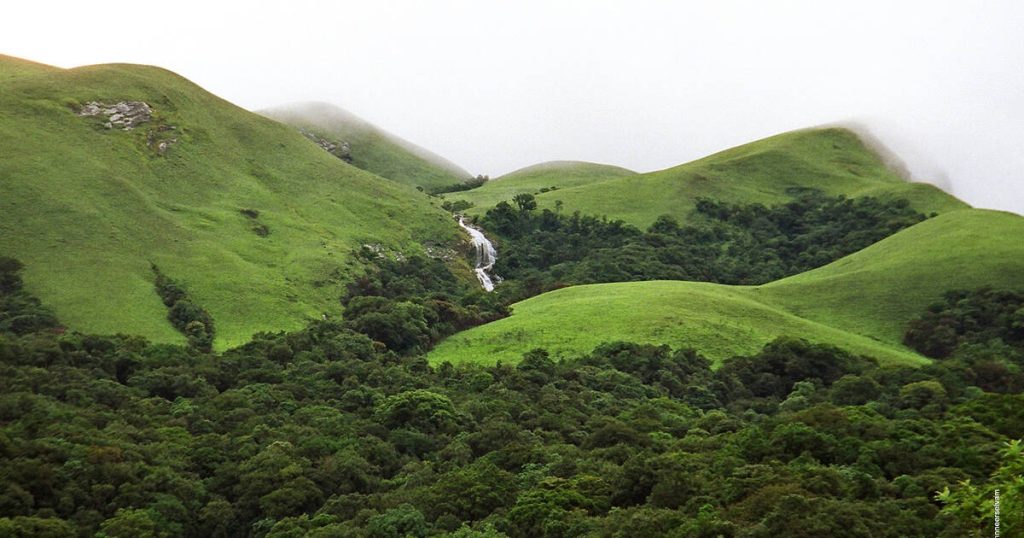Context:
Conservation evades the depleting Mettukurinji flower of Western Ghats despite its beauty and significance.
More on the News:
- In Idukki’s hills, the famous Neelakurinji (Strobilanthes kunthiana) is well-known, but there is another stunning flower, the Mettukurinji (Strobilanthes sessilis), that often goes unnoticed.
- The International Union for Conservation of Nature (IUCN) classified Neelakurinji (Strobilanthes kunthiana) as a ‘threatened’ species, recognizing its ecological significance and the need for its protection.
Western Ghats
The Western Ghats comprise a mountain range running parallel to India’s western coastline, stretching across the states of Kerala, Maharashtra, Goa, Gujarat, Tamil Nadu, and Karnataka.
It also referred to as the Sahyadri Hills, is renowned for its diverse and unique collection of flora and fauna. It is recognized as a UNESCO World Heritage Site.
About Mettukurinji
- Mettukurinji, also known as Topli Karvy, is endemic to the Western Ghats (apart from Kerala, it is found in Maharashtra and Karnataka) and belongs to the Acanthaceae family, which includes 450 species native to the wet tropical regions of Asia and Madagascar.
- India is a hotspot for the Strobilanthes genus, with over 160 species, 72 of which are endemic to the Sahyadris.
- The flowers, in various shades of purple, lavender, and blue, create a breathtaking landscape, drawing tourists from far and wide.
Differences Between Mettukurinji and Neelakurinji
- Mettukurinji appears nearly identical to Neelakurinji. However, experts can distinguish between the two by subtle differences in flower morphology.
- Mettukurinji lacks leaf stalks, has flowers arranged in spikes closely attached to the stem, and features flaring petals. These delicate flowers bloom for about three months, painting the green hills of Idukki in a vibrant hue.
- There are three known varieties of Mettukurinji: Strobilanthes sessilis var. sessilis, Strobilanthes sessilis var. sessiloides, and Strobilanthes sessilis var. ritchiei.
- Unlike Neelakurinji, which blooms every 14 years, Mettukurinji flowers every seven years, thriving on the northern slopes of the Western Ghats at altitudes of around 800 meters.
Significance
- Role in Ecosystem: Helps stabilize hilly terrains, prevents soil erosion, and supports biodiversity in montane regions.
- Traditional Uses: Local Adivasi communities use Mettukurinji for treating inflammatory disorders.
- Pharmacological Research: Potential for anti-inflammatory, antifungal properties, and commercial use in the cosmetics industry.
Conservation Challenges
- Climate Change: Unpredictable rainfall, increasing temperatures, and ecological asynchrony affecting flowering patterns and pollinators.
- Human Impact: Deforestation, landslides, floods, and tourist activities (like plucking flowers) threaten their survival.
- Lack of Awareness: Mettukurinji has been overshadowed by Neelakurinji in conservation efforts.
- Limited Research: Insufficient ecological knowledge hinders effective conservation.
- Taxonomic Confusion: Misidentification affects conservation and protection strategies.
Conservation Efforts Needed
- Focused Studies: More research on ecology, phenology, and distribution to inform conservation strategies.
- Updating Conservation Protocols: Revise biodiversity evaluation methods to include lesser-known species like Mettukurinji.
- Public Awareness: Increase understanding of Mettukurinji’s ecological and medicinal importance.

